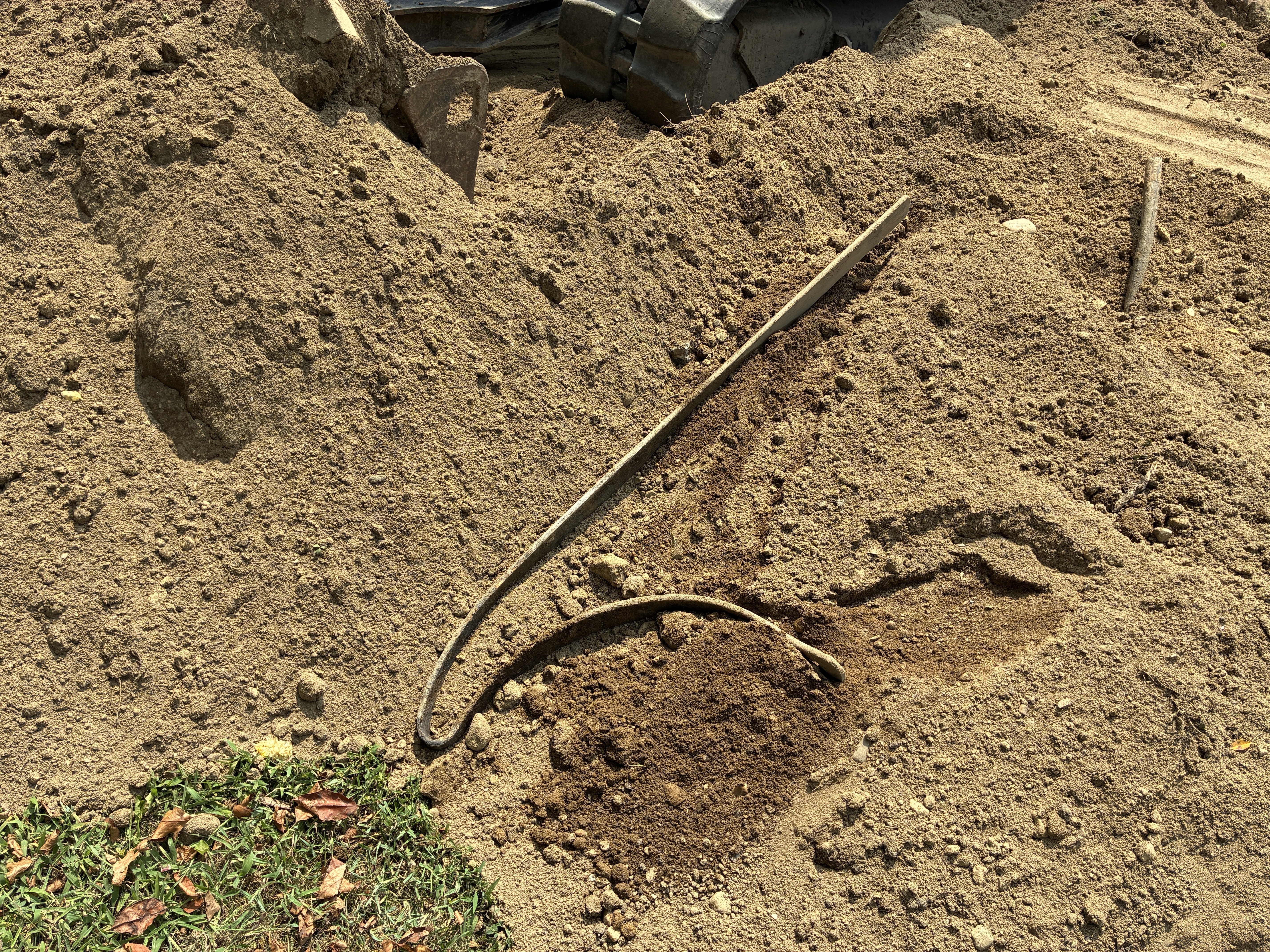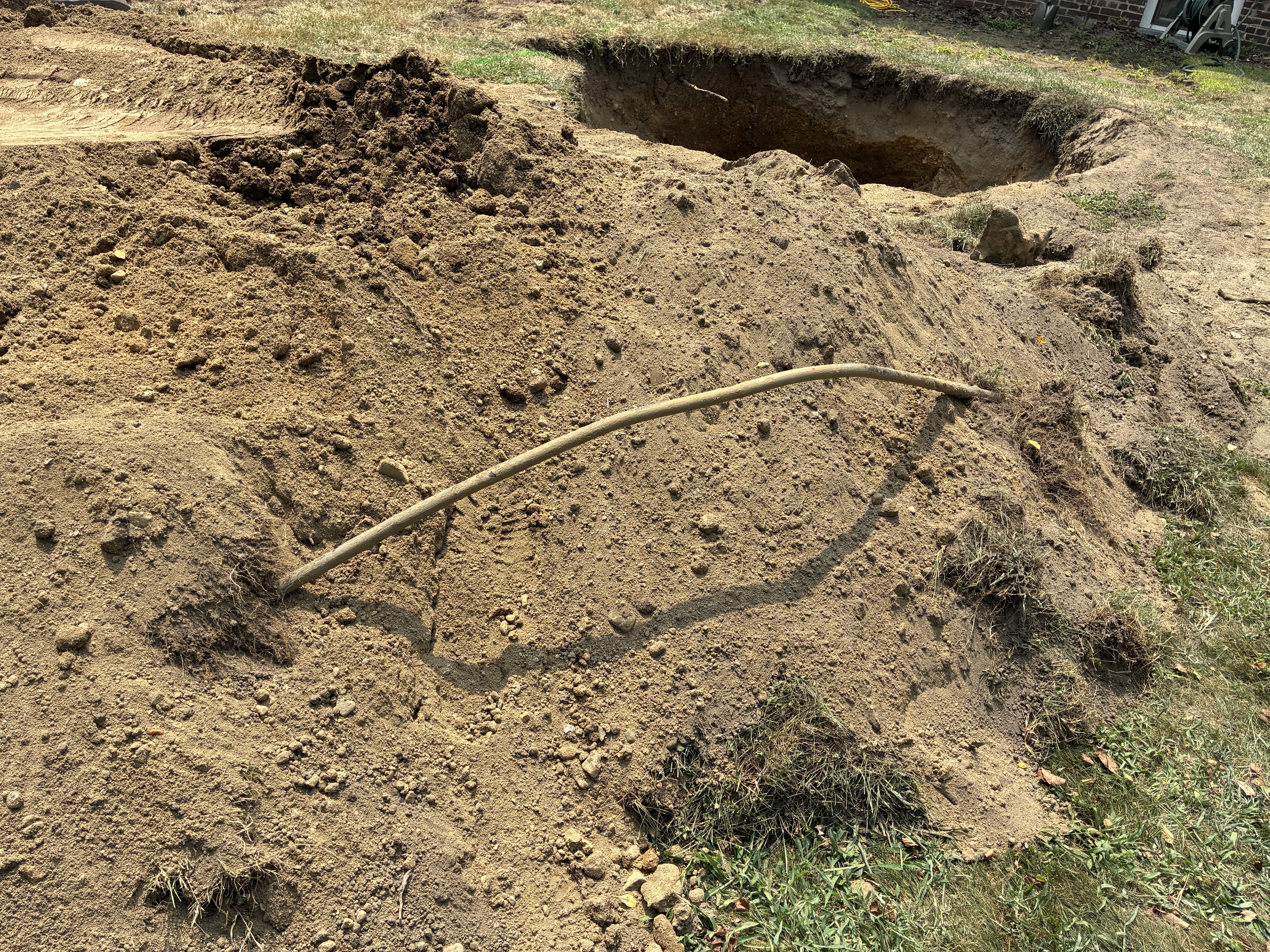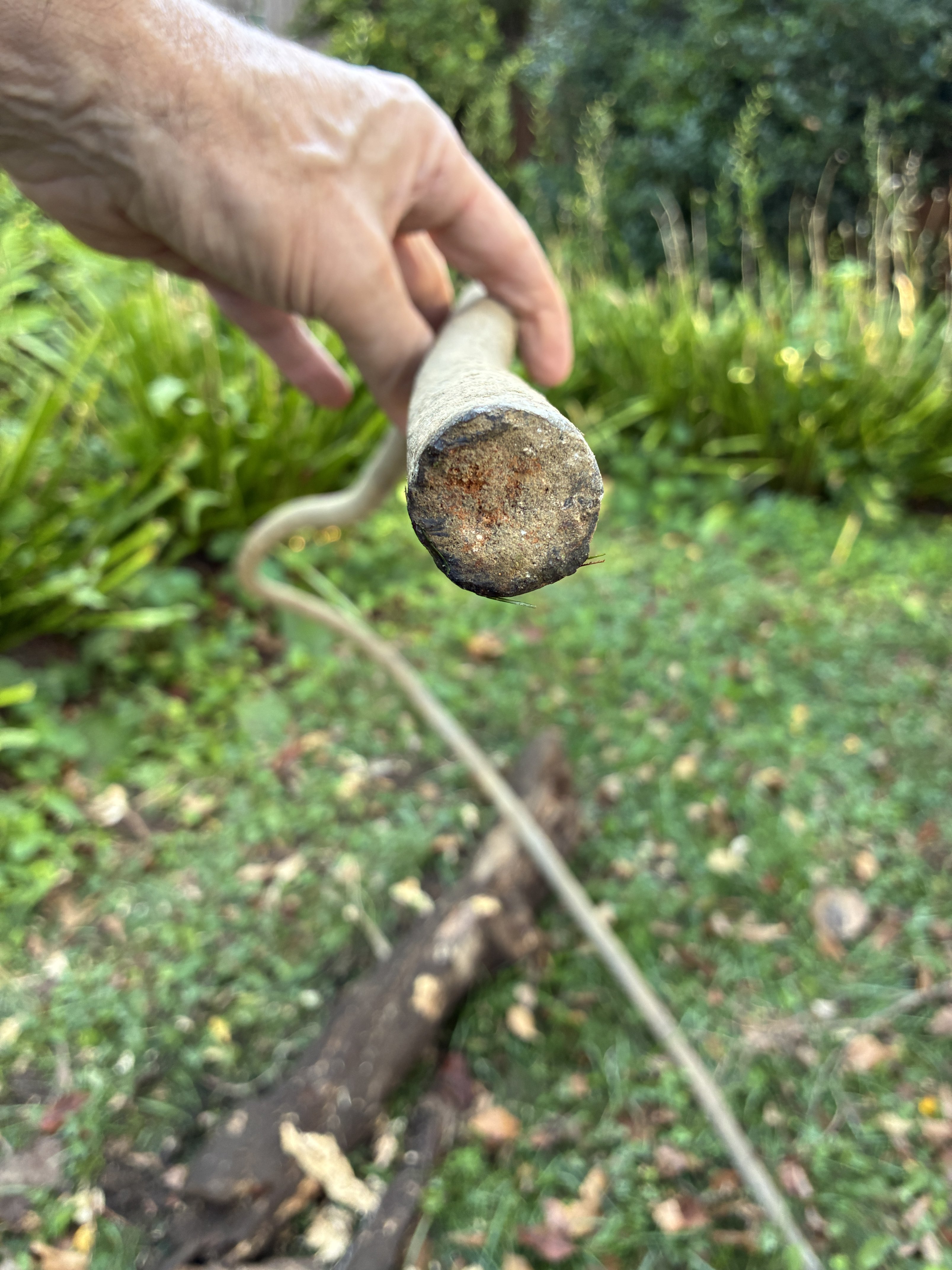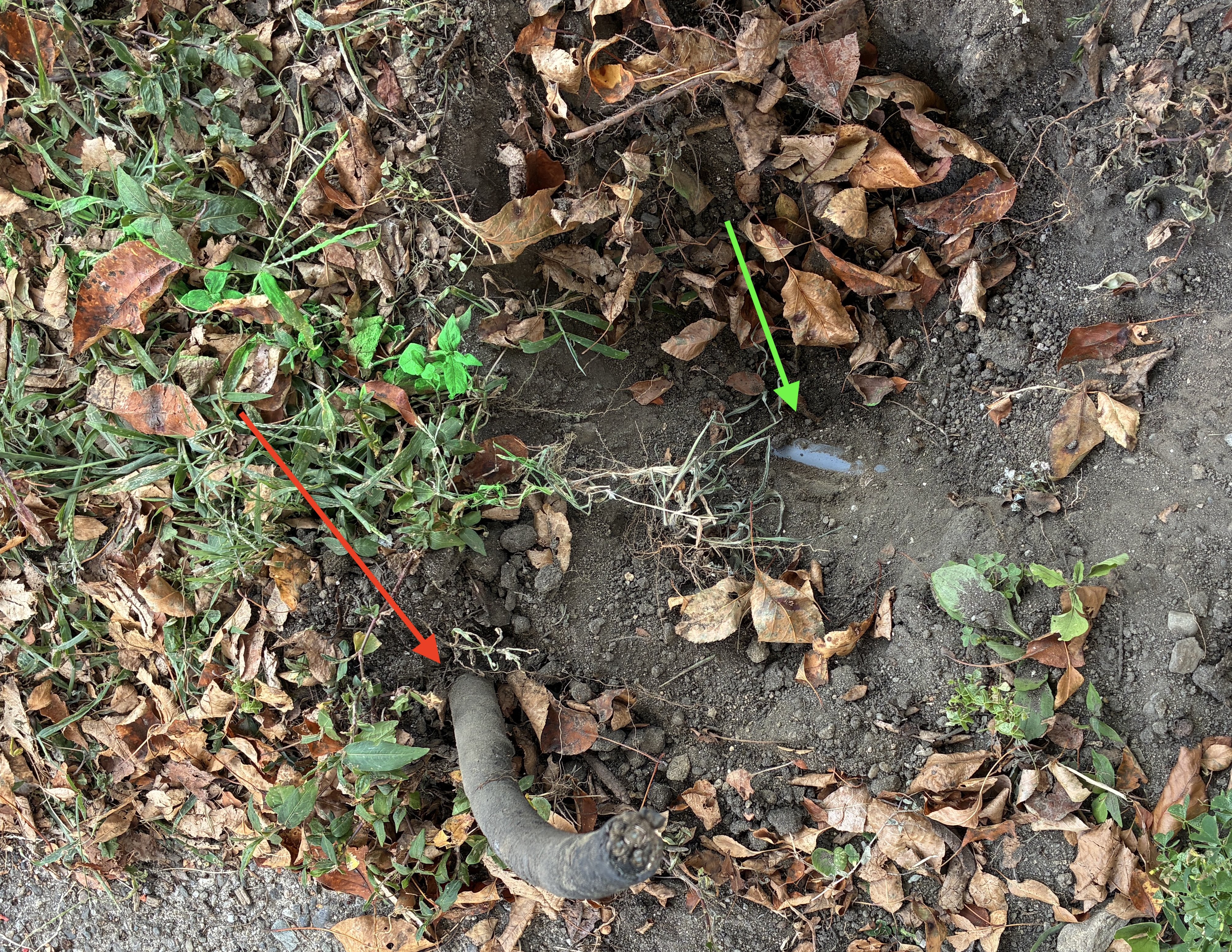OT What is this metal piece found in excavation?
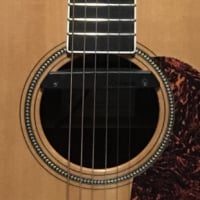
Found this today while contractors were excavating back yard of 1924 house. Along with it were some apparently old water pipes, bricks. Since the water pipes were nowhere near the water line I'm assuming they have been dumped by a prior homeowner––who was also a building contractor––when they replaced the water lines. This piece has a hole at one end for a bolt, etc.
Comments
-
-
-
@mattmia2 @Mad Dog_2 Thanks Matt and Matt. Bingo on septic tank since the excavation was done to correct a depressed area in the yard which we know was caused by a septic tank. In this case the tank turned out to be nothing more than collection of large rocks cemented together into a dry well a century ago. There was some kind of conduit going in from the main house waste, a clay storm water drain line from the rear roof leaders, and then some either galvanized or lead detached 3/4" water pipes. I can't see why there would ever have been water pipes connected here so I figured that the prior owners dumped them in there when they replaced their water lines and/or switched to municipal sewers in the mid 1950s. Or did septic tanks have vents? Not sure galvanized bends like this.
0 -
-
We could have had both cistern and septic tank in the same pit. I guess a cistern could be located fairly near a septic tank, though probably placed higher —to protect against contamination—and so that the water pipes going back to the house could be a few inches lower to enable flow and still enter the house high enough for access. When we did a sewer line a few months back we found a cistern/dry well off of the front leader, no water pipes but the theory would be that that well prevented water from flowing onto the sidewalk whenever it rained—at least back a hundred years ago.
0 -
-
On second thought though I know galvanized is known for sealing from within, this is so extreme…and if this wasn't a pipe what is it?
0 -
-
-
-
When I get time I'll cut off a piece of the cable. It is impossible to bend by hand and there's rust stains, so probably not lead. But it does make more sense if it is electric cable—if I look closely I can almost see the cut ends. That makes a lot more sense than water pipes in that location. Seems entirely possible in 1924 for them to run an underground line to the detached double garage. Those days the entire house was probably only 60amp service or less. It was 100amp by late 90s and now 200.
0 -
Steel will be springy, lead will be maliable and stay more or less where you bend it. Could be rigid or intermediate conduit with wires pulled in it.
0 -
-
what fun would bringing a magnet in to this be…
0 -
So the pipe is steel after all, as the magnet has declared. So will cut it soon to inspect. I will have to ask some local historian if the electric ran on overhead lines when it first arrived here. If it was then I'd assume the UG was between the house and garage.
Then we'd have an interesting history here since there still, in addition to the current, working buried PVC garage line, a soft, old rubber foam covered cut line which I had assumed was the original line that sticks up from the ground a few inches. Have to pull that and see what that reveals.
The prior tenant had said: "The garage had no electricity when we moved in late '70s. We were told that there had been an overhead line, hung between the house and the peak of the garage, the terminus of which you must be seeing on the ground on the left side of the garage. The actual cable remained in a coil in the basement for a long time."
So an original underground line, an overhead line and the current line. That seems possible given the 100 year-old history. Then there's a 3/4" circular cutout in a rear basement window frame for either a gas or electric line….
0 -
It was pretty common to run sillcocks through window frames.
0 -
So here the green arrow shows the current 3/4" grey pvc 20amp buried line we'll be replacing; the red arrow shows a buried line with the soft rubber outside. The prior tenant said she heard that the line that was gone by the time she arrived there ran from the house overhead to the garage roof. So I guess it's possible there was the original buried steel line, then a buried soft rubber line, and then an overhead line, then a buried pvc line.
0 -
so cord isn't rated for use like that
0 -
unless that is ser or sec or something like that
0 -
-
It will be.
0
Categories
- All Categories
- 87.3K THE MAIN WALL
- 3.2K A-C, Heat Pumps & Refrigeration
- 61 Biomass
- 427 Carbon Monoxide Awareness
- 119 Chimneys & Flues
- 2.1K Domestic Hot Water
- 5.8K Gas Heating
- 114 Geothermal
- 165 Indoor-Air Quality
- 3.7K Oil Heating
- 76 Pipe Deterioration
- 1K Plumbing
- 6.5K Radiant Heating
- 395 Solar
- 15.6K Strictly Steam
- 3.4K Thermostats and Controls
- 56 Water Quality
- 51 Industry Classes
- 50 Job Opportunities
- 18 Recall Announcements
